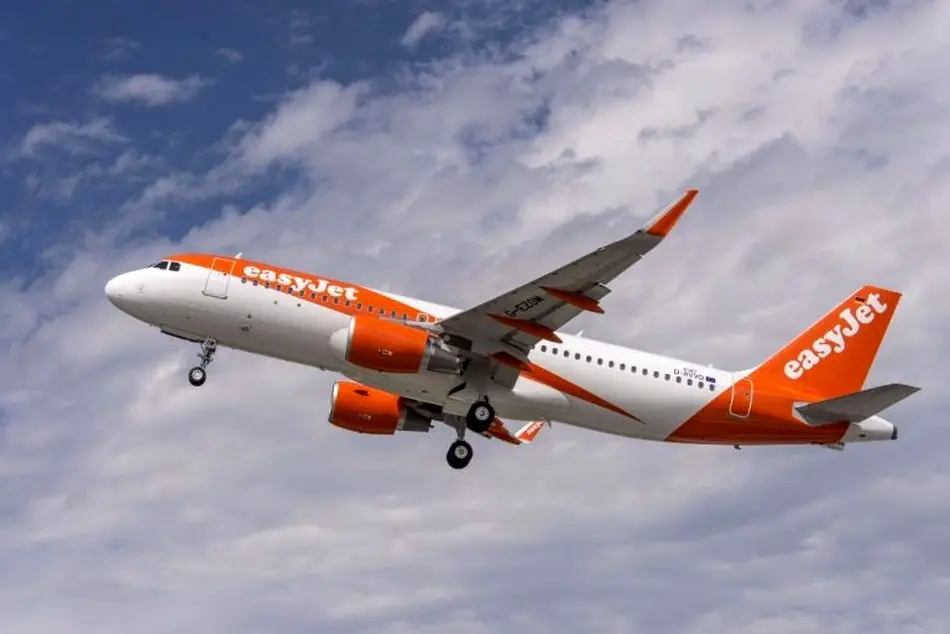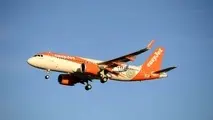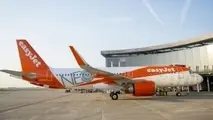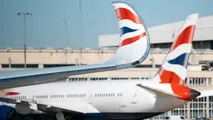After 30 Years, easyJet Is Still Making Moves
Under the leadership of a new CEO, UK-based LCC easyJet is looking to technology to further strengthen operations, keep costs low and remain competitive in a sector that has become far more dominant in Europe than when it launched 30 years ago.

Under the leadership of a new CEO, UK-based LCC easyJet is looking to technology to further strengthen operations, keep costs low and remain competitive in a sector that has become far more dominant in Europe than when it launched 30 years ago.
Kenton Jarvis, who was promoted from CFO to CEO in January, told ATW he has spent his first year in the new role “really focused on operational stability.”
This includes the roll-out of various resilience measures, such as increasing the number of back-up aircraft in the airline’s all-Airbus A320 family fleet to 14 (growing to 15 next year), positioning more spare parts around the network, and using some “very good” simulation software.
“We can just drop the schedule into this software. We can actually put parameters in, like air traffic control delays,” Jarvis explained. “Rather than having to fly it and live the experience, you can run it and predict the experience.”
This guides easyJet on whether crew will run out of permitted hours, or if the flight is likely to hit an airport curfew. “Even last year, we would have had to cancel the flight,” he said. “This allows us to either amend the schedule, or if there’s not enough flexibility in the slots, it allows us to split the crew pairing, invest in more crew, or if we model it early enough, we can do it before the recruitment window shuts.”
When easyJet launched in 1995, the LCC model was very different. EasyJet’s then-Boeing 737s were liveried with the airline’s reservations number and free seating created a race to get onboard. Back then, passengers were suspicious of the LCC model, questioning where the cost savings came from, and some corporate travel policies blocked employees from using LCCs. Meanwhile, global distribution providers were unhappy about LCCs pushing for direct sales.
But some things remain the same. “When Stelios [Haji-Ioannou] founded easyJet, it was to democratize travel, to disrupt the way people booked travel,” Jarvis said. “And that’s still the purpose today, to make travel as affordable, easy and accessible for as many people as possible.”
Over the past 30 years, however, the LCC playbook has changed. In the early days, LCCs were clean-sheet airlines that outsourced as much as possible, which was a different model compared with the legacy competitors. Today, easyJet has a 30-year legacy of its own, and some services are being brought back in-house.
“Now, having up to 2,000 flights a day through the summer, we obviously need to keep investing in systems,” Jarvis said. “We developed our [mobile phone] app with a partner; we didn’t have full ownership. We took that back at the end of last year, and that’s allowing us to quickly get the app back to where it was, but fully in our control.”
EasyJet also bought a heavy maintenance facility in Malta in early 2024 because the market was becoming constrained. Jarvis is now looking to bring 50% of heavy maintenance in-house. “If the parts aren’t there in advance of the plane, it’s our fault,” Jarvis said. This helps easyJet predict aircraft availability and stabilize its schedules.
Ground handling is still outsourced, but this has evolved into strategic partnerships. For example, DHL supplies easyJet with ground handling during the UK summer peak and then reassigns workers to package handling over Christmas.
“Sometimes we can’t do it cheaper,” Jarvis said.
THE BAG QUESTION
Another change in those 30 years: paid-for seating, checked baggage fees and buy-on-board refreshments are now the norm in short-haul economy among network airlines. However, European Union (EU) regulators are pushing for airlines to accept two items of hand luggage without charges, a proposal being fought by many airlines, especially the LCCs.
“We still strongly believe that people should pay for the services they want to take,” Jarvis said, noting around a third of easyJet’s passengers pay the basic fare and do not check a bag or bring a wheelie carry-on. “If they want to bring a [second] cabin bag, there’s more weight, there’s a cost. They should pay for that.”
In the early days, there was no cabin bag weight limit. Passengers were only required to get their bags into the locker unassisted. “It could be full of gold bars,” Jarvis joked. If it was within the size limit, it would have been allowed. However, hand luggage became the single biggest cause of delays. “Aircraft aren’t designed for everyone to bring a cabin bag,” Jarvis said. “For 186 seats, you might only be able to bring 70 cabin bags on board. If we’re selling them, we know when we get to 65, it’s probably time to stop.”
Hand baggage also impacts the gate experience, which, aside from mobile phone boarding passes replacing paper passes, has not changed much over the past 30 years. Jarvis said gate layout was largely beyond an airline’s control, but easyJet is modernizing boarding with a new ground crew app.
This app, which has already been rolled out at Manchester Airport in the north of England, means gate agents can leave the desk and walk through the queue, checking boarding cards and passports, to speed up boarding. Data are transferred to the flightdeck and cabin crew, removing the need for paper copies.
The app also cuts costs, because airlines pay to use gate computers. EasyJet is now encouraging ground handlers at other airports to equip their staff with devices.
An increasing number of airports are also introducing stand cameras, giving greater visibility of the turnaround process. “The camera is time-stamping all the events that are happening around the aircraft,” Jarvis said. “With the use of AI within the camera and the volume of turnarounds it has in its data history, it is now far more reliable at predicting when a turnaround will finish than we are. That accuracy can then be fed to the apps, and it can digitalize the whole turnaround experience.”
HOLIDAY BREAKS
Turning to its network, easyJet has opened several UK regional bases to align with its easyJet Holidays business. “That has been a tremendously successful venture,” Jarvis said. “We built that to 10% market share, but you still have the likes of Jet2 and TUI having 40% market share in the UK, between them. It’s a long way from the end of its journey … we think there’s a big opportunity to extend the beach holidays to city breaks, for instance.”
EasyJet’s network is also evolving in response to online working and shifting travel patterns. Pre-pandemic, around 75% of easyJet’s business was city and domestic flights, with beach and non-EU destinations making up the remaining 25%. “Beach and non-EU has grown to about a third of the business. We’re still primarily a domestic/city airline, but beach and leisure are becoming increasingly more important,” Jarvis said.
Passenger desire for “exotic” destinations, combined with greater range from the neo fleet, is also reshaping the network. “The fastest growth we have is outside the EU,” Jarvis said. “We’ve increased our average sector length over the last six quarters. It’ll increase again as we go into this winter, and then it’ll start to stabilize, because I think that remixing is largely done now.”
Another significant shift for easyJet was the transition from Boeing 737 to all-Airbus A320 family operations, which concluded in 2011. Today, easyJet has an Airbus pipeline stretching out to 2034, with 100 purchase rights. Some of those aircraft will be used to replace easyJet’s 82 A319s, which will be retired over the next seven years. “Today in the fleet, only 5% of our aircraft are A321s. By 2028, that will be 20% and probably by 2034 that’ll be more like 40% so, by then, it’ll be just under half the fleet,” Jarvis said.
Jarvis said aircraft prices have “definitely gone up” since easyJet struck the Airbus deal. “We will probably discuss the purchase rights over the next year or two, and then delivery slots will probably be 2033-2034, if needed.”
Looking to the next 30 years, Jarvis sees technology as the greatest source of change, but he believes aviation will always be a “people-heavy business.” In particular, he sees strong potential in agentic AI, which proposes solutions, rather than just serving up data.
“You need one cabin crew for every 50 seats on an aircraft, and you need two pilots. But everything else is up for innovation,” he said. “I do hope one day that hydrogen travel is possible, and we really do have a license to travel with no carbon emissions. But until that day, we’ll keep buying more efficient aircraft, we’ll keep lobbying for airspace modernization and we’ll buy SAF according to the mandates.”


